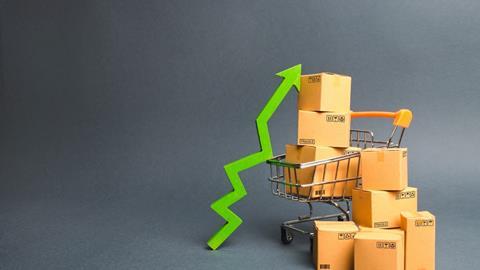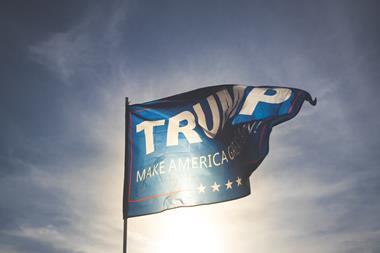What strategies can we expect from FMCG leaders and retailers navigating through inflationary times in 2022?
We are entrenched in an incredibly difficult era, with inflationary pressures seen throughout the entire value chain. Farmers, processors, packers, logistics providers, wholesalers and retailers are all experiencing higher input costs. These cost increases are gradually being fed through the value chain, severely impacting manufacturers and on the brink of being passed on to retailers.
Historically, the track record for suppliers trying to get pricing over the line with retailers has been a patchy affair. Retailers are often resistant to price increases, but there are lots of signs now that suppliers looking to get pricing through are pushing against an open door. Retailers around the world are cognizant that prices will have to go up, but there are different ways and means to execute this from a supplier perspective, so there are various options open to suppliers as they look to execute pricing in 2022.
A number of suppliers spent 2021 executing narrow pricing – i.e. increasing prices for certain brands, in certain countries, in certain channels or with certain retailers. It now seems likely that, in 2022, suppliers will shift from narrow to broad price increases as virtually all of their products are under the same degree of pressure when it comes to input cost increases.
There is also a key difference between simply increasing list prices and conducting revenue growth management tactics that can factor in different things like promotional activity alongside invoice prices.
Innovation is key to navigating the inflationary environment
A significant number of suppliers have highlighted innovation as a way to navigate their way through the forthcoming inflationary environment. Bringing new products to market can hold a number of key advantages, the most basic being that new items don’t have an established value in the market and therefore pricing can be positioned accordingly to make sure that higher input costs are covered off while retaining a healthy margin.
Executed correctly – i.e. based on a genuine consumer need or consumption occasion – innovation can bring added value to categories and create incremental demand by stimulating sales within the category and even bringing new shoppers into a category. This genuine innovation can position suppliers well when it comes to price negotiations and also when it comes to dealing with retailers who might be looking to reduce range more broadly in order to make themselves more efficient.
The fact that a lot of new product development (NPD) is accompanied by heavy investment in terms of in-store marketing and point of sale means that impulse spending can be prompted and that lapsed shoppers might be brought back into categories. At the very least, this can lead to incremental sales within the category but might also prompt increased spending across the entire store, particularly as a number of major retailers are becoming more adept at collaborating with suppliers to enjoy exclusivity on new products.
This renewed emphasis on innovation and NPD can form an important part of the broader conversation on landing pricing with customers. Genuinely innovative new products are an important part of a value creation narrative as they are often accompanied by broader marketing initiatives and promotional investments that create incremental category growth.
Similarly, above-the-line advertising and brand campaigns can stimulate overall demand, alerting shoppers to the existence of new products or improved lines, plus reawakening demand from some shoppers who do not shop the category frequently or who have become lapsed consumers.
Likewise, in-store shopper marketing – be that regular point-of-sale material or on-pack promotions or competitions – can also drive demand. By collaborating in this way with retailers, conversations can be elevated beyond a pure nuts and bolts discussion around invoice pricing towards a broader dialogue around category growth, meaning that a retailer might be more amenable to accommodate price increases in 2022 and beyond.
Communicating brand attributes to justify pricing

Another benefit of advertising and shopper marketing can be the communication of product attributes that justify higher prices and can help maintain demand. Against the backdrop of increasing urgency around environmental matters and health issues, for example, the ability to convincingly communicate sustainability or health and wellness benefits could help brands justify a higher price point in an inflationary environment.
A similar advantage can also be achieved by underlining a brand or product’s reputation for quality. By underscoring premium credential, higher prices are much more justifiable in the eyes of the shopper and more favourable outcomes might well be achieved.
Revenue growth management to the fore
The invoice price is just one aspect of the value proposition that a brand brings to the negotiating table.
Other factors – such as pack, product and promotion – are also important parts of the negotiation and, by having clear insight into the different role of different commercial levers, this can often mean that the invoice price alone becomes part of a broader conversation.
Visibility into brand P&L and retailer P&L for each category can mean that invoice price increases can be accompanied by a portfolio of different promotional mechanics that can come together to create a more holistic view of the impact of price increases on the broader category.
The importance of modelling, forecasting and price optimisation
While it might be tempting to simply pass on price increases root and branch to retailers, it’s essential that suppliers try to wargame and forecast the impact of such increases. This is particularly important for multi-brand and multi-category suppliers, where the impact of a 10% price increase, for example, can be markedly different depending on the status of each brand and their position in overall category hierarchies.
Price elasticities can vary enormously in different markets, different categories. and within different retailers. Each country and retailer will have a distinct shopper profile who will react differently to price changes and it will be vital that suppliers can more or less accurately forecast price elasticities to make sure that price increases are focused accordingly.
Suppliers could be well advised to develop an item-level pricing strategy, rather than a category or blanket one. Modelling and forecasting can be used to try and estimate the impact of price increases by item in general terms, but also trying to accurately gauge the impact by channel and by customer. Suppliers can often be surprised by how price-inelastic some brands or items can be and the pricing is often easier to achieve than imagined.
Another area where planning, forecasting and modelling will be important is taking a category-eye view of any possible price changes. Clearly, it will not be just one supplier who is looking to raise prices in isolation. This is an industry-wide phenomenon and within any given category there might be four or five major branded suppliers plus private label to also bear in mind when it comes to the overall impact on category spend. As we’ve already noted, price is just one lever that can be pulled in the overall proposition, so other areas like promotional intensity and any additional shopper marketing measures should also be factored into any wargaming to ascertain the impact of price increases.
Execution and in-store compliance

As in most areas of retail it’s often useful, if not essential, for suppliers to ensure that any changes – be that in terms of price, pack, format or promotions – are being monitored to ensure that they are being executed correctly.
While, historically, this might be the remit of sales reps, suppliers often ditch this relatively expensive way of ensuring compliance and instead look to companies like Exceedra to ensure that price changes are being enacted effectively.
Likewise, with NPD or perhaps new promotional initiatives underway in an attempt to mitigate the impact of inflation on demands, it’s essential that these in-store initiatives are also monitored carefully to ensure that execution is carried out in an optimal way.
A more sophisticated set of strategies for 2022
The focus for suppliers in 2022 will have to be on a more sophisticated set of strategies to land pricing with retail customers.
Undoubtedly, innovation based on consumer needs and elevated efforts in terms of advertising and branding should form the bedrock of these endeavours. Countless suppliers have reiterated that this emphasis on newness and closeness to shoppers puts them on a firmer footing when it comes to passing on inflation to retailers.
Pricing will have to be more sophisticated than just hiking prices across the board. Product-specific, channel-specific and retailer-specific pricing actions based on solid forecasting and modelling will be required and a keen eye should also be aimed on in-store compliance to ensure that NPD and promotional execution is where it needs to be to support broader RGM targets.
To learn more about this, read Exceedra’s white paper: Navigating Through Inflationary Times.



















